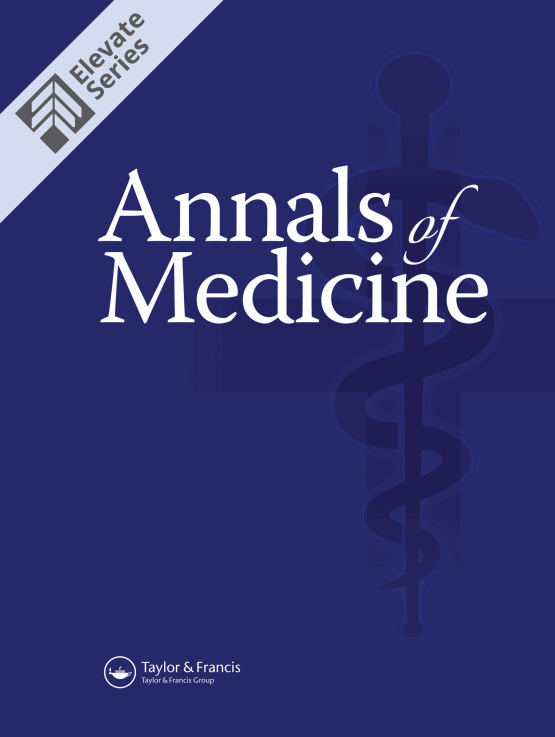Submit a Manuscript to the Journal
Annals of Medicine
For an Article Collection on
Secondary Glomerulonephritides: Conditions That Should Be Differentiated from Primary Glomerulonephritis
Manuscript deadline


Article collection guest advisor(s)
Dr. Mineaki Kitamura,
Department of Nephrology, Nagasaki University Hospital, Japan
minekitamura@nagasaki-u.ac.jp
Prof. Anjali A. Satoskar,
Department of Pathology, Wexner Medical Center, The Ohio State University, USA
anjali.satoskar@osumc.edu
Secondary Glomerulonephritides: Conditions That Should Be Differentiated from Primary Glomerulonephritis
Glomerulonephritis (GN) encompasses several disorders that cause glomerular inflammation and injury through an interplay of immune-mediated mechanisms, host characteristics, and environmental triggers, such as infections (bacterial, viral or other), drugs, neoplastic process, pregnancy or systemic autoimmune disease processes. Accordingly, glomerulonephritides can be broadly classified into primary (idiopathic) or secondary depending on the impact of various triggers relative to underlying genetic host-related factors. The histopathologic features tend to be similar in primary versus secondary forms of GN, therefore clinical history, serology, and ancillary diagnostic techniques such as mass spectrometry, novel immunostaining targets, serologic markers and even genetic testing are becoming quintessential to clinch the diagnosis and utilize the best possible therapeutic options in the era of personalized medicine. In view of this, we welcome articles on selected topics in the field of inflammatory and other glomerular diseases to update the readers on the latest trends in diagnosis.
Kidney biopsy is a powerful tool for identifying underlying causes of glomerular disease. However, morphologic overlap can limit the utility of biopsy if not corroborated with detailed clinical history and utilization of novel diagnostic techniques where applicable. Starting with a broad differential diagnostic approach, close follow-up and detailed ongoing dialogue between the treating nephrologist and renal pathologist have gained importance for optimal management of patients with kidney disease. It is important to keep up with important recent research as well as controversies, targeted therapies and their potential impact on biopsy findings, and evolving disease classifications so as to implement newer, less toxic but more efficient therapies, and even avoidance of immunosuppressive therapy where possible.
The goal of this Article Collection is to solicit submissions of research articles, methods, strategies, and clinical trials that focus on distinguishing secondary glomerulonephritis from primary glomerulonephritis, using newly developed technologies or approaches for diagnosis and treatment. We also welcome articles addressing the challenges in diagnosing and confirming secondary glomerulonephritis.
Topics of interest include but are not limited to:
- Drug-induced glomerular diseases
- Use of anti-nephrin antibody testing in podocytopathy-related glomerular disease
- Secondary IgA nephropathy
- Secondary thrombotic microangiopathy
- Secondary membranous glomerulonephritis
- Alport’s mimics
Guest Advisors
Dr. Mineaki Kitamura - I have conducted extensive research on complications in hemodialysis patients, including polypharmacy, pneumonia, valvular heart disease, coronavirus vaccination, cerebral hemorrhage, and nutrition. From 2021 to 2023, I pursued advanced studies at the Ohio State University Wexner Medical Center, where I also conducted pathological research focusing on infection-associated nephritis and transplant kidney pathology. My expertise lies in clinical research rooted in real-world clinical practice.
Prof. Anjali A. Satoskar - I completed medical school and clinical internship in India, followed by a five-year residency in Clinical and Anatomic Pathology, split between Beth Israel Deaconess Medical Center in Boston and The Ohio State University. After few years in basic research and a two-year fellowship in Renal and Transplant Pathology, I joined the faculty at Ohio State in 2017 and have practiced nephropathology for over 15 years. Now as a full Professor and Director of the Renal and Transplant Pathology Division, I also oversee a busy service processing over 1,800 kidney biopsies annually. My research focuses on Staphylococcal infection-associated glomerulonephritis, amyloidosis, and transplant pyelonephritis, with over 90 peer-reviewed publications.
All manuscripts submitted to this Article Collection will undergo a full peer-review; the Guest Advisors for this Collection will not be handling the manuscripts (unless they are an Editorial Board member). The Guest Advisors declare no Conflict of Interests.
Please review the journal scope and author submission instructions prior to submitting a manuscript.
The deadline for submitting manuscripts is 25th May 2026.
Please contact Commissioning Editor Francis Straw at francis.straw@tandf.co.uk with any queries or for details about APC discounts.
Please be sure to select the appropriate Article Collection from the drop-down menu in the submission system. Please select the most suitable section (Nephrology or Urology) from the list of available sections during submission. Failure to select the appropriate Article Collection or Section name can result in delays.
Benefits of publishing open access within Taylor & Francis
Global marketing and publicity, ensuring your research reaches the people you want it to.
Article Collections bring together the latest research on hot topics from influential researchers across the globe.
Rigorous peer review for every open access article.
Rapid online publication allowing you to share your work quickly.
Submission Instructions
All manuscripts submitted to this Article Collection will undergo desk assessment and peer-review as part of our standard editorial process. Guest Advisors for this collection will not be involved in peer-reviewing manuscripts unless they are an existing member of the Editorial Board. Please review the journal Aims and Scope and author submission instructions prior to submitting a manuscript.
